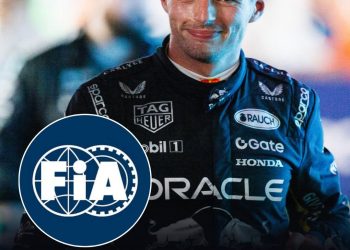Since his debut in 2015, Max Verstappen has reshaped the boundaries of Formula 1 so drastically that the FIA has implemented or modified ten separate rules in direct response to his actions. Beginning his journey with Toro Rosso at just sixteen, Verstappen quickly gained a reputation for pushing the sport’s limits—both technically and ethically—compelling the FIA to intervene repeatedly to preserve fair play and safety. His relentless competitiveness has not only earned him four world titles and 67 Grand Prix wins but has also made him one of the most influential figures in shaping modern F1 regulations.
Among the earliest changes was the establishment of a minimum super licence age after Verstappen’s teenage debut sparked widespread controversy. The FIA raised the eligibility age to 18, requiring a valid driving licence to ensure a higher level of maturity and experience. However, they later softened this restriction, granting case-by-case exceptions to prodigious young talents—an acknowledgment of Verstappen’s precedent-setting success. His fiery temperament, however, also spurred disciplinary reforms after his physical altercation with Esteban Ocon at the 2018 Brazilian Grand Prix, leading to clearer guidelines against unsportsmanlike conduct.
Verstappen’s meticulous attention to technical detail brought about further adjustments. Following his post-race inspection of Lewis Hamilton’s Mercedes in 2021, the FIA tightened parc fermé security and implemented stricter post-race protocols. Similarly, after his celebratory burnouts at the Styrian Grand Prix, the FIA outlawed such displays, mandating safe returns to the pit lane. His aggressive racecraft also prompted revisions to overtaking and track-limit rules, particularly after controversial maneuvers at the 2017 U.S. Grand Prix and 2021 Brazilian Grand Prix—moments that tested the very spirit of competition.
Additional rule clarifications emerged concerning pit-lane conduct, safety-car restarts, and defensive driving. Verstappen’s precise yet bold race strategies repeatedly exploited regulatory gray areas, pushing the FIA to define boundaries more clearly. For example, his move under braking against Hamilton at Suzuka in 2016 led to an informal ban on directional changes during braking—a rule that continues to influence driver behavior today.
Ultimately, Verstappen’s decade-long presence has transformed F1’s rulebook more than any other driver in the modern era. His fearless driving, boundary-pushing tactics, and relentless pursuit of dominance have forced regulators to evolve the sport alongside him. Whether admired as a visionary or criticized as a disruptor, Verstappen’s legacy extends beyond trophies—it lies in the very framework of the rules that now govern the world’s fastest sport.











